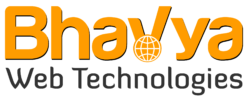In today’s digital era, a company’s website is more than just an online presence — it is a primary touchpoint for customers, a sales channel, and a brand-building tool. With users accessing websites from smartphones, tablets, laptops, and even smart TVs, delivering a seamless browsing experience across all devices is no longer optional. This is where responsive web design (RWD) becomes crucial.
Responsive web design ensures that a website automatically adapts to different screen sizes and resolutions. From layout and images to navigation and content, everything adjusts for the best user experience — no matter what device a visitor uses.
1. Enhances User Experience
A positive user experience is at the heart of any successful website. Responsive web design ensures:
-
-
-
Smooth navigation
-
Easy-to-read text
-
Properly scaled images
-
Faster loading times
-
-
When users enjoy a seamless experience, they are more likely to stay longer, explore more pages, and convert into customers.
2. Boosts Search Engine Rankings (SEO)
Google prioritizes mobile-friendly websites in search results. If your site isn’t responsive:
-
-
-
Your rankings will drop
-
Organic traffic will decrease
-
Competitors may outperform you
-
-
Responsive design is a key factor in Google’s mobile-first indexing, making it essential for businesses looking to grow online visibility.
3. Increases Conversion Rates
Customers expect convenience. If a website loads poorly or is hard to use on mobile, visitors will quickly leave. Responsive web design improves:
-
-
-
Checkout flows
-
Lead form submissions
-
Click-through rates
-
Overall customer satisfaction
-
-
A responsive website builds trust and encourages visitors to complete actions that matter for your business.
4. Saves Time and Money
Before responsive design became popular, companies maintained separate desktop and mobile sites. This meant double the work and double the cost.
With responsive web design:
-
-
-
You maintain one website for all devices
-
Updates are faster and more efficient
-
Long-term maintenance costs are significantly reduced
-
-
It is a smart investment that pays off in the long run.
5. Strengthens Your Brand Image
A responsive and visually appealing website reflects professionalism. Customers naturally associate a smooth browsing experience with quality and reliability.
A responsive site helps you:
-
-
-
Maintain consistent branding
-
Stay competitive in your industry
-
Build a strong online reputation
-
-
In modern markets, your website often gives the first impression — make it count.
6. Future-Proofs Your Business
Technology is evolving rapidly. New screen sizes, devices, and resolutions enter the market every year. Responsive design prepares your site for the future, ensuring it remains compatible with:
-
-
-
Foldable smartphones
-
Wearable devices
-
Large-format screens
-
New browser technologies
-
-
It helps businesses stay relevant in a constantly changing digital landscape.
Conclusion
Responsive web design is no longer a trend — it is a necessity for modern businesses. From improving user experience and boosting SEO to increasing conversions and strengthening brand identity, the benefits are undeniable. Companies that invest in responsive design gain a competitive advantage and are better positioned to succeed in today’s mobile-first world.
If your business hasn’t optimized its website yet, now is the perfect time to make the shift.
